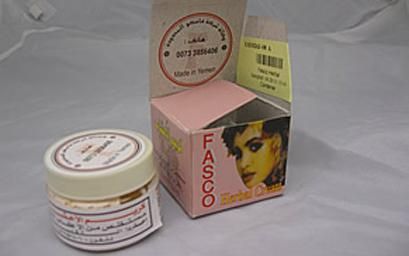
They have names like Fasco Herbal Cream and FC Lemon Herbal Whitening Cream. And they're widely sold in local immigrant communities, with labels saying they contain nothing more ominous than vitamins and natural plants.
But on Wednesday, Minnesota health officials said they detected dangerous and illegal levels of mercury in almost a dozen types of skin-lightening products. They warned consumers to avoid all skin-lightening products unless they can be sure they're mercury-free.
Some of the samples tested by the state Health Department contained more than 33,000 times the permissible level of mercury, so much that they urged consumers to treat the products as hazardous waste.
"It's a very significant level," said Aggie Leitheiser, assistant commissioner of health.
So far, no known illnesses have been linked to the products in Minnesota, Leitheiser said. But she said mercury can be extremely dangerous, especially to pregnant women and young children, because it can damage the kidneys and nervous system.
Leitheiser said the products seem to be marketed largely to minority groups, but that they're also sold to treat freckles and age spots, which means anyone might use them.
On Wednesday, the products were on display at a small shop in the Cedar-Riverside neighborhood of Minneapolis, home to a large Somali community. A clerk said he had never heard of any danger associated with the creams, nor did a man who identified himself as the store's owner.
Jeff Connell, of the Minnesota Pollution Control Agency, said his agency is trying to find out where the products are sold and get them off the shelf as soon as possible.
He said that Minnesota bans the sale of cosmetics containing mercury, but that these products appear to be widely distributed through an informal network.
In some cases, he said, the products -- often sold in tiny, glittery boxes with Asian or Arabic script -- appear to be made overseas and brought here in suitcases or by UPS.
This is the first time these products have been found in Minnesota, officials say, but they have turned up in other states.
In 2005, the New York Daily News reported that a woman suffered mercury poisoning from a skin-lightening cream she picked up in the Dominican Republic.
Last year, a Chicago Tribune investigation found that six out of 50 skin-lightening products chosen for testing contained mercury.
Leitheiser said the Health Department learned of the problem only a few weeks ago, when it was asked to test a sample of skin-lightening products collected by staffers at the St. Paul-Ramsey County Health Department.
State technicians tested 27 products, including 23 creams and four soaps, and found that 11 had mercury levels ranging from 135 to 33,000 parts per million. Federal law permits only "trace amounts," less than 1 part per million.
Ramsey County officials said they became suspicious about the lightening creams when a staffer came across a blog about the mercury dangers.
The staffer, who worked with immigrant groups, knew the creams were popular among Somalis and others and thought it was worth checking out, said Zachary Hansen, the county's director of environmental health.
He said a team of investigators had no trouble finding the products in local stores; the state investigation is continuing.
Most of the labels do not mention mercury, Connell said.
On some, though, it may appear under different names, including calomel, mercuric, mercurous or mercurio. When applied to the skin, the mercury can "readily be absorbed by the body," the Health Department said.
Because mercury is a toxic pollutant, the Minnesota Pollution Control Agency said the products should be taken to hazardous waste disposal sites; they can be found here.



Did Michael Jackson ever use skin lightening products?
If so it might explain some of his behaviors that seemed a bit strange.